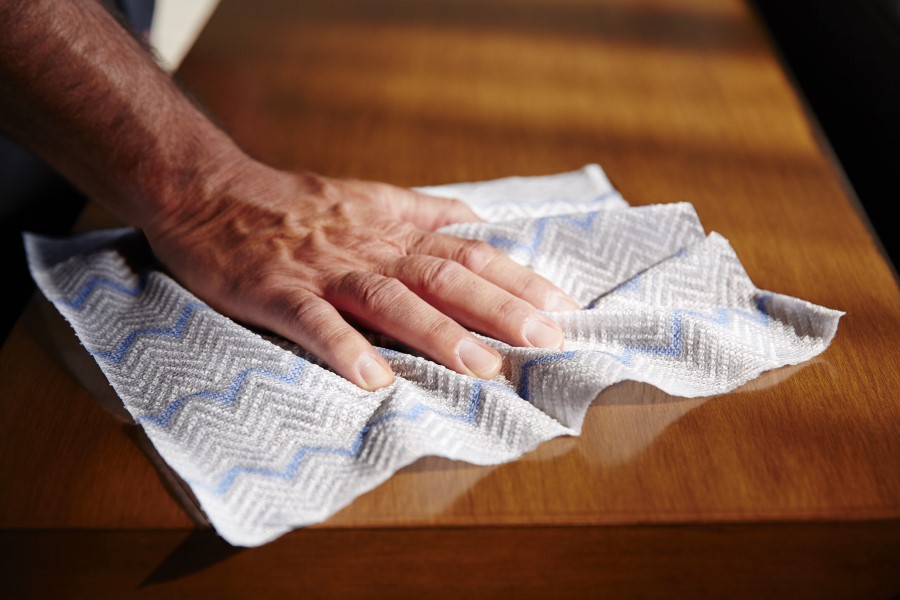
While the novel coronavirus has made infection control more apparent and important than ever, encouraging strong health habits and finding resolutions for controlling disease rates among aged care facilities has always been a top priority across Australia. When the right controls are put in place, staff, residents and visitors are protected from viruses and prepared to respond to common infectious diseases like influenza, as well as COVID-19, as explained by the Australian Government Department of Health.
So what exactly does infection control in aged care look like?
Let’s take a closer look at some of the common infections that develop among the community living and working within aged care facilities, infection prevention protocol and control programs to consider, and specific Rubbermaid solutions and resources staff in aged care facilities can utilise to encourage good health among residents:
With age, the immune system changes. Overall health and wellness become more critical than ever. Because of this, aged care settings tend to be a space where infectious diseases catch and spread rather quickly. Infectious diseases that are more typical among these communities include the common cold, the flu and gastroenteritis. According to the Department of Health, seniors and those in aged care living environments are more vulnerable to catching one of these infections, and many of them can be life-threatening or cause something more severe such as dehydration or pneumonia. For these reasons, developing and maintaining protocols for infection control in aged care remains critical.
Because seniors are an at-risk group, prioritising infection prevention and control within aged care facilities is a must. The flu, for example, is a highly contagious illness that can be passed via droplets with a simple cough or sneeze that would otherwise be considered harmless. Gastroenteritis, also referred to as gastro, leads to symptoms like nausea, vomiting and diarrhoea. The Department of Health reported that an outbreak in an aged care facility of both of these infections can start very quickly, even if only a few residents are sick in the first place.
While infection control in aged care is necessary, prevention methods put in place in any setting is necessary to the overall health and wellbeing of society. According to the U.S. Center for Disease Control and Prevention, infection control is defined as the necessary actions needed to stop the spread of infection among healthcare facilities and other similar settings. When it comes to understanding infection prevention and control basics, the CDC has created two tiers of precautionary measures to consider:
Both tiers of precautions also provide various recommendations based on droplet and airborne precautionary measures.
Staff members of aged care facilities are expected to notify the state health department and then swiftly make moves to manage the infectious disease as it makes its mark on the facility. Increasing hygiene measures (with a major focus on hand hygiene), wearing masks and gloves, and isolating affected residents are major ways to slow the spread. Staff assisting aged care living facilities are also expected to notify residents’ family members and collect specimens to send to the lab to trace the cause of the outbreak in hopes of putting a stop to it.
Putting precautions in place, but also monitoring them on a regular basis, can ensure cleanliness and reduce the risk of infection spread. These small steps can be made by staff members to ensure overall infection prevention and infection control in aged care across the board.
What is the key hygiene issue in residential aged care?
Recently, the Royal Commission into Aged Care Quality and Safety released its safety standards and coronavirus precautions. The organisation looked at the quality and safety of residential and in-home aged care for older people and those living with disabilities. In its final report, the Royal Commission highlighted the following as the key concerns of residents in aged care facilities:
Issues related to staff were among the highest concern. Medical and hygiene-related concerns fall toward the end of the spectrum regarding concern among aged care facility residents, but that doesn’t make the anxiety and worry any less critical. With these statistics in mind, residential aged care facilities should focus on making improvements involving hand hygiene and infection prevention while also focusing on other areas that will make residents feel safer and more at ease, especially during a global pandemic.
Beyond providing the utmost care for all residents, aged care facilities have a few specific priorities in mind: preventing risk of injury, managing a budget and keeping worker productivity in mind, all while reducing the rapid spread of infections and viruses like COVID-19 along the way.
Breaking the chain of infection is made simple with the right cleaning protocols and tools in place. Rubbermaid has designed a variety of aged care solutions to reduce the spread of disease and improve cleaning efficacy while also preventing slips, trips and falls.
What are some helpful Rubbermaid resources for infection control in aged care?
Our Resource Centre has a variety of resources that can make infection prevention and control easier to manage in aged care facilities. From product assembly instruction to brochures, case studies, safety data sheets and more, there’s a plethora of information facility staff members can access as needed.
Our Aged Care Best Practice Guide and Aged Care Product Recommendations Brochure is an excellent resource to learn more about how RCP can help your facility create and sustain a safe living environment. With our best-in-class spill clean-up products, HYGEN microfibre cloths and BRUTE® Bins and accessories, you can feel confident that your facility prioritises infection control in aged care. Contact us today to learn more.